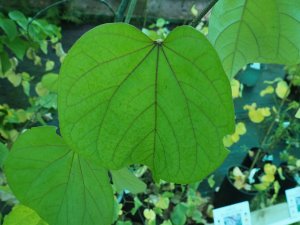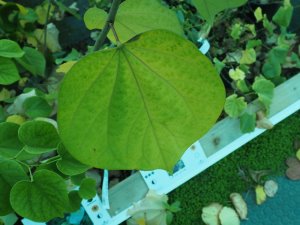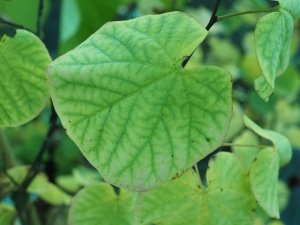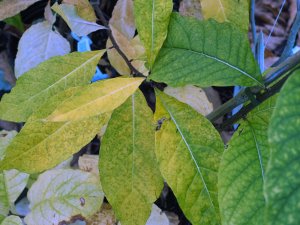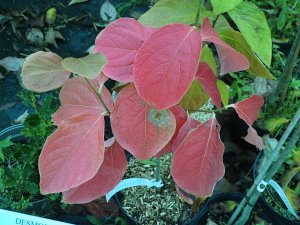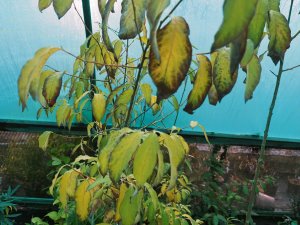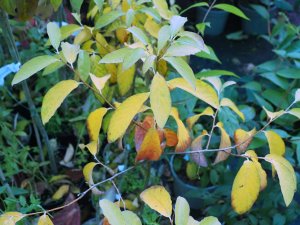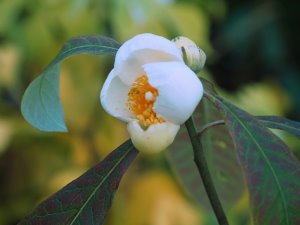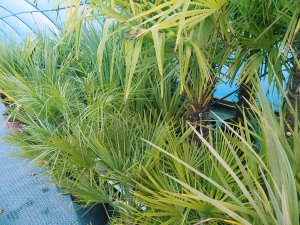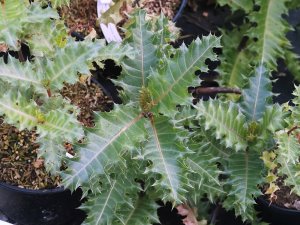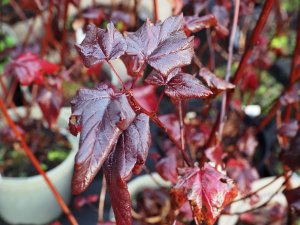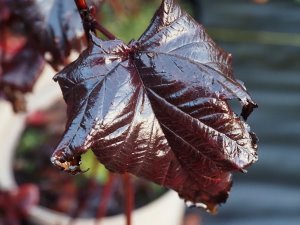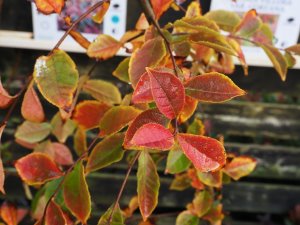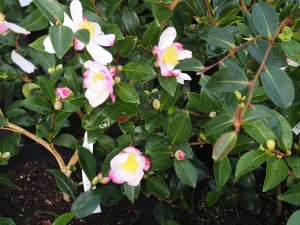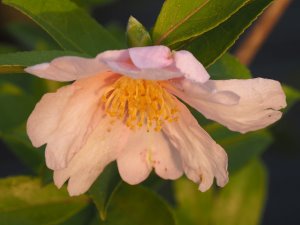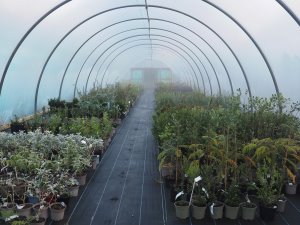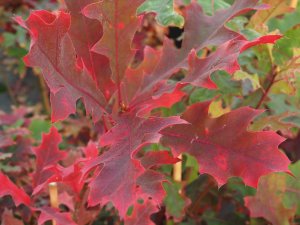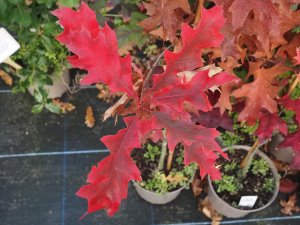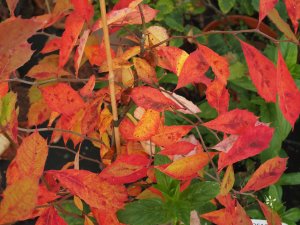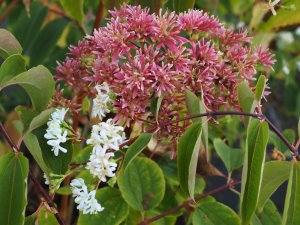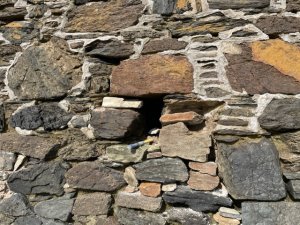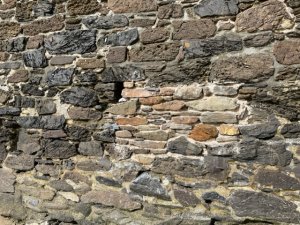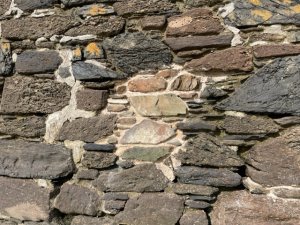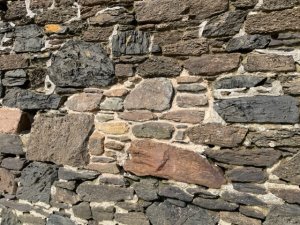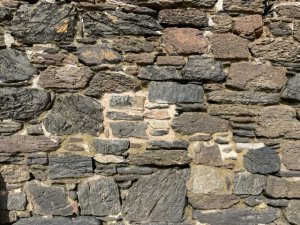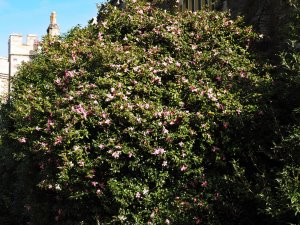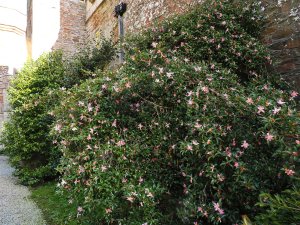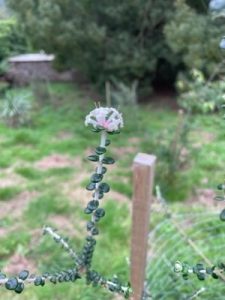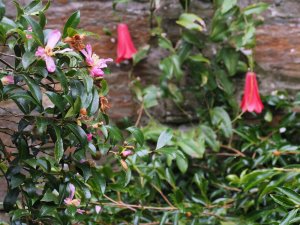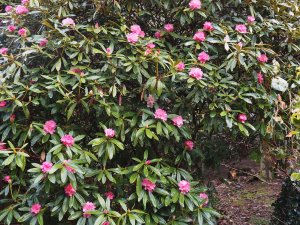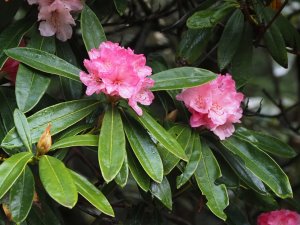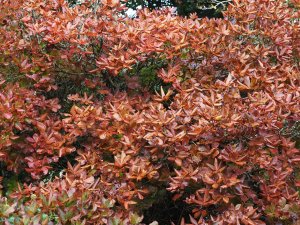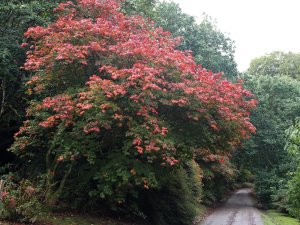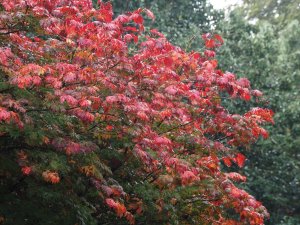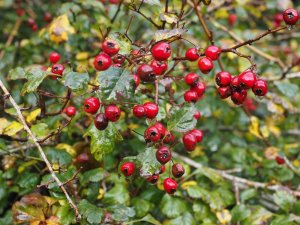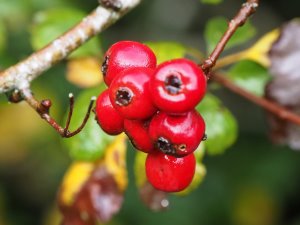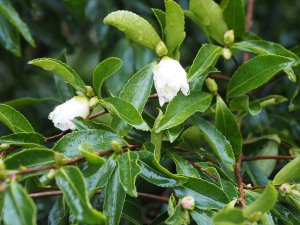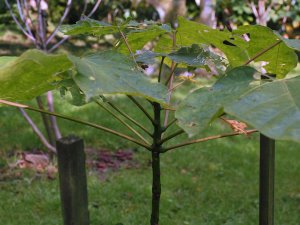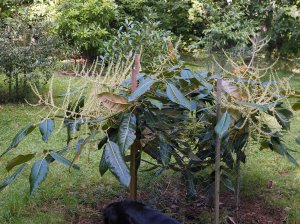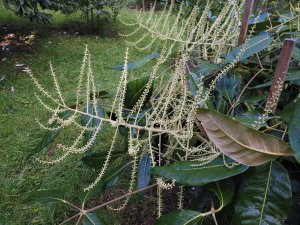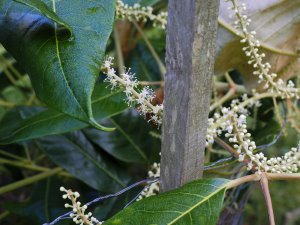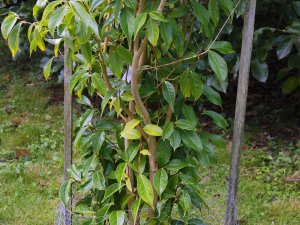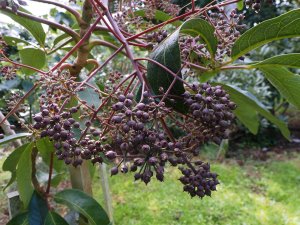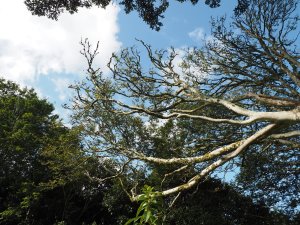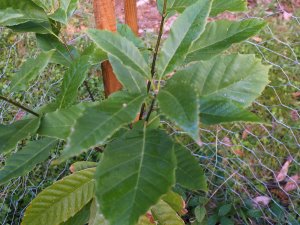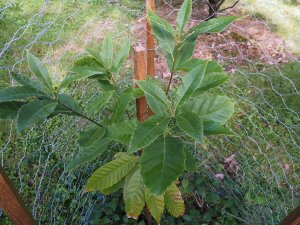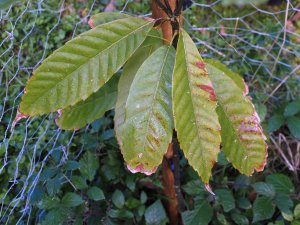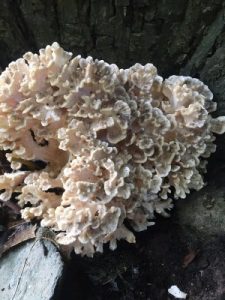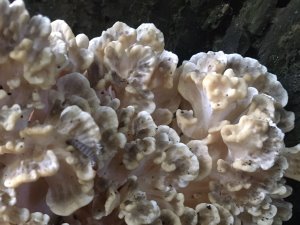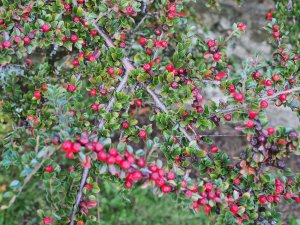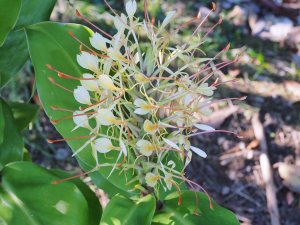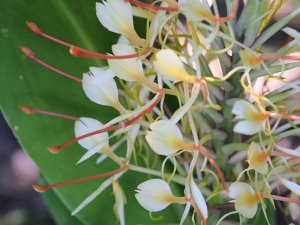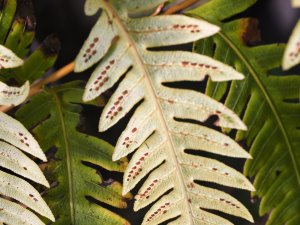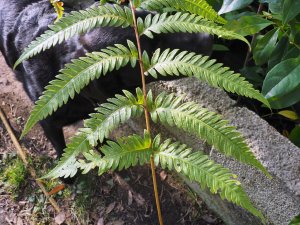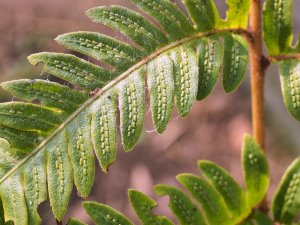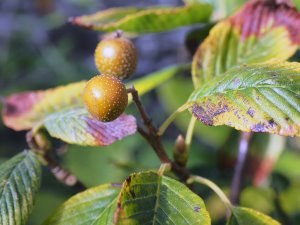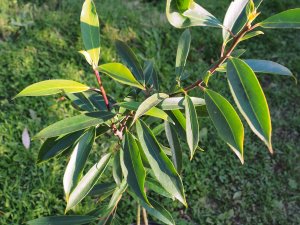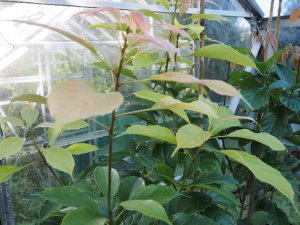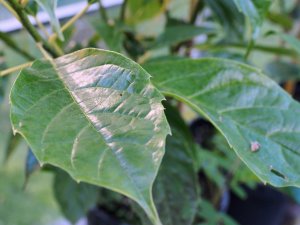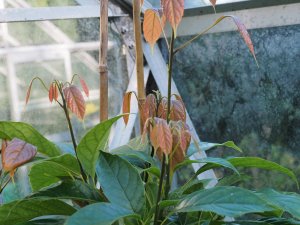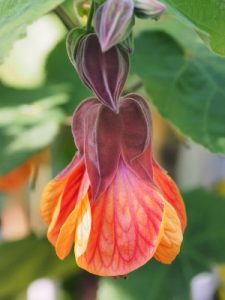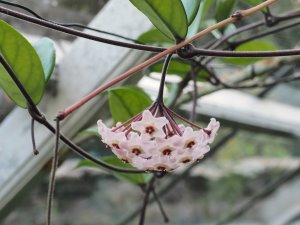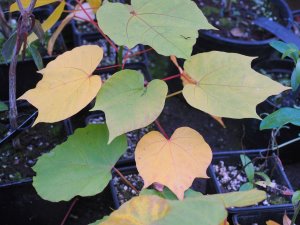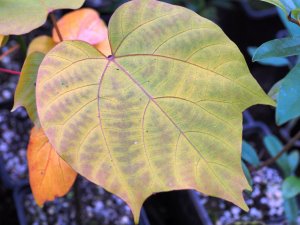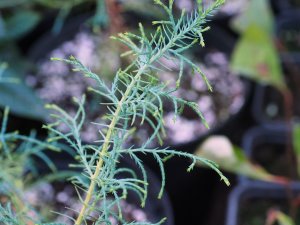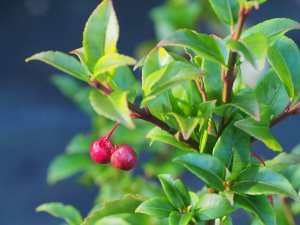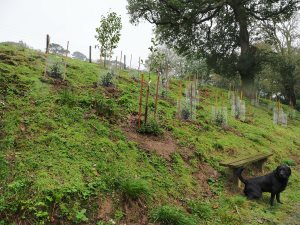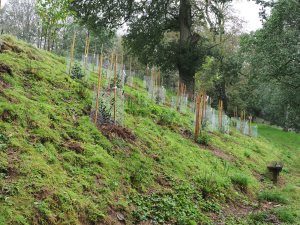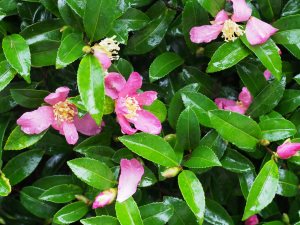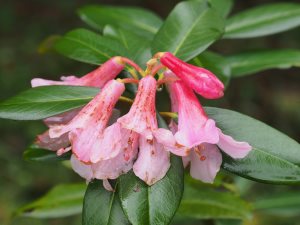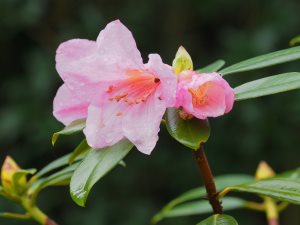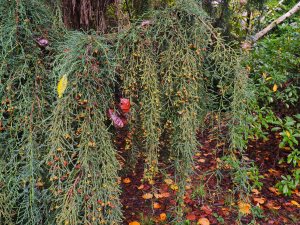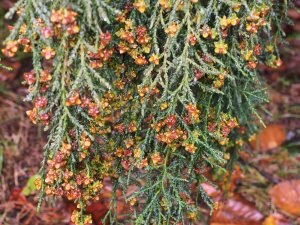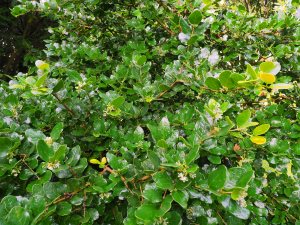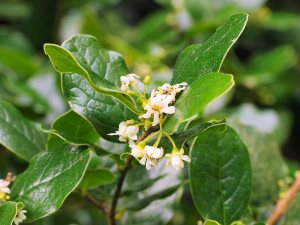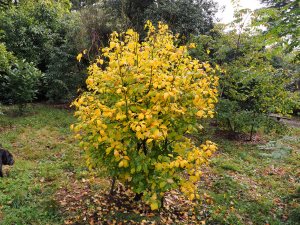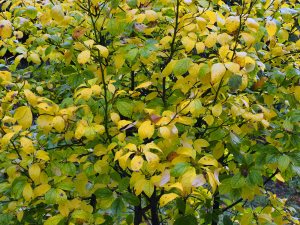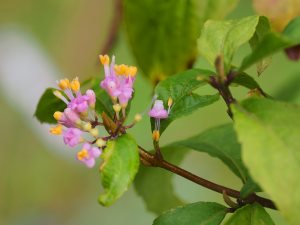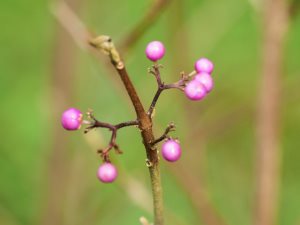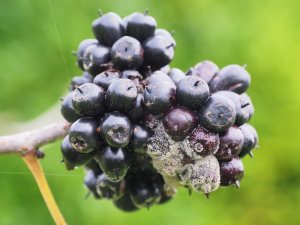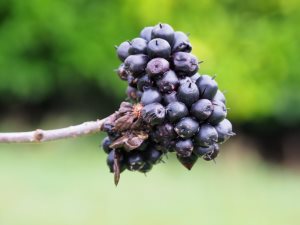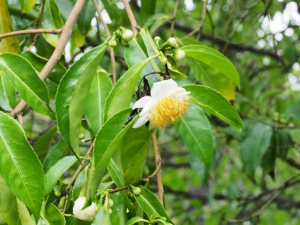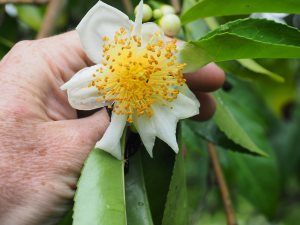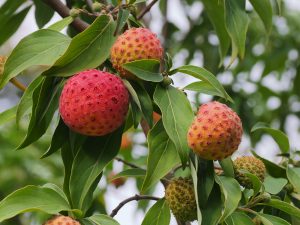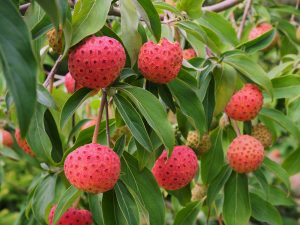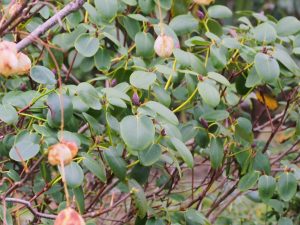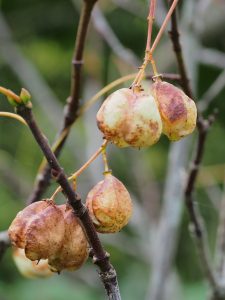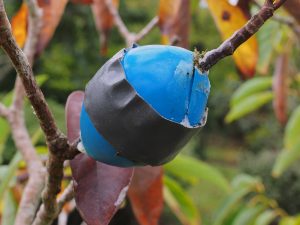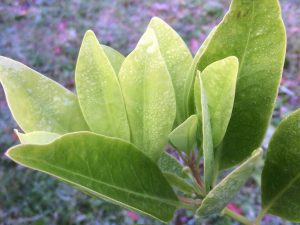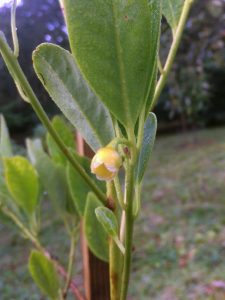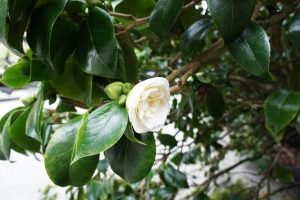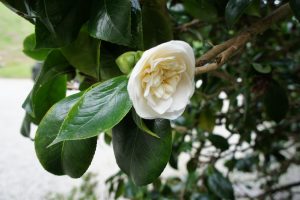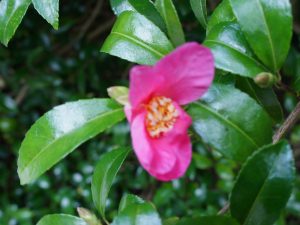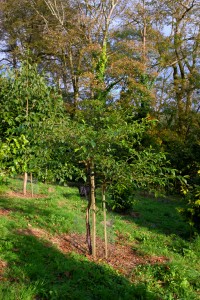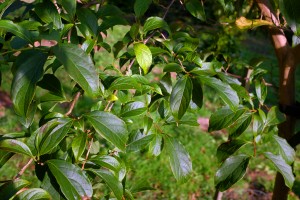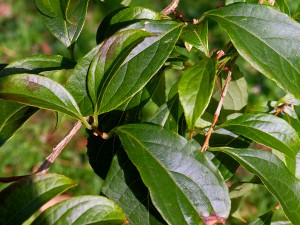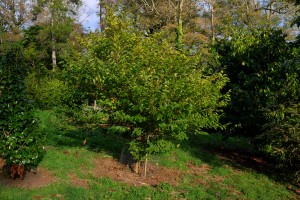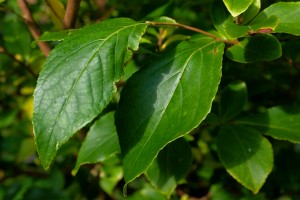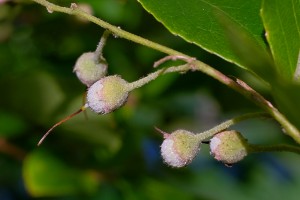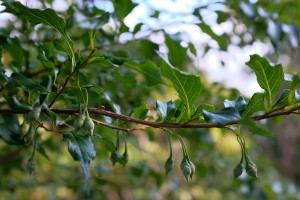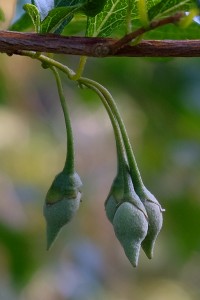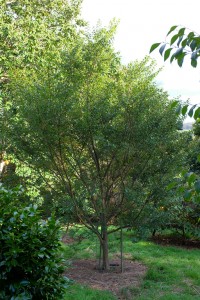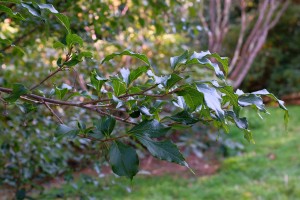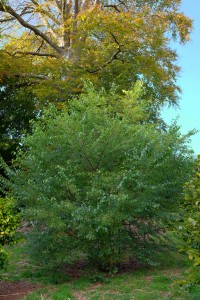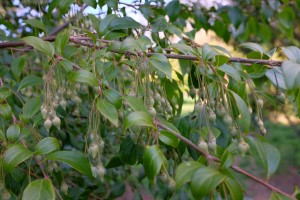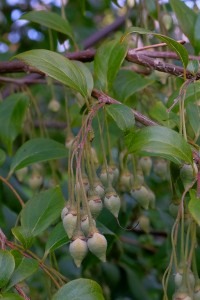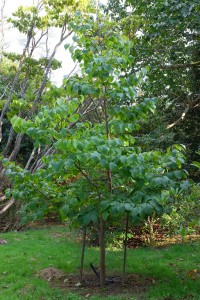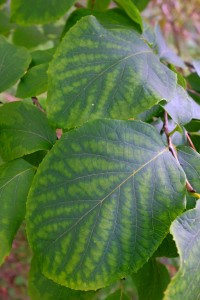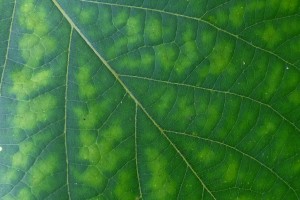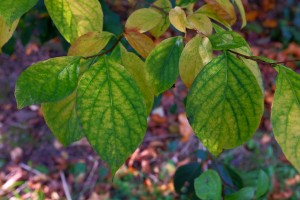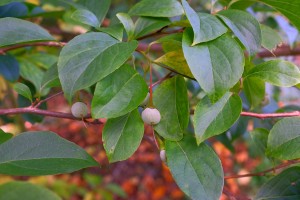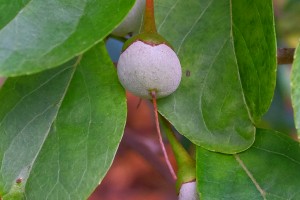2024 – CHW
Again at Burncoose to try to catch some autumn colours.
Oxydendrum arboreum.
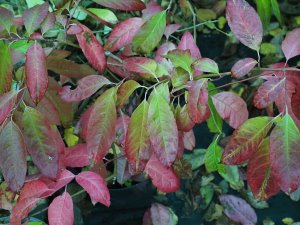
2023 – CHW
KPK have finished the storm damage repairs to the stone wall sea defences built in the Second World War. A fair bit of work with the tide timetable to hand but this will hopefully prevent any further deterioration. One good storm and a small hole soon becomes a bigger one. These may be boring pictures for readers of the diary but they are an interesting historic record of the state of the wall today.
I do not think I have ever seen Rhododendron nobleanum full out as early as this. I saw colour here at least a week ago.
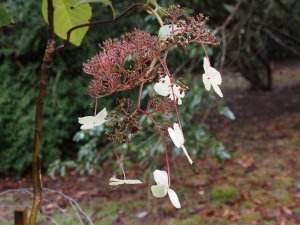
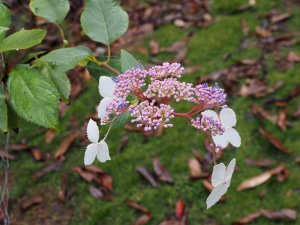
Firmiana simplex has extended its main stem by all of 3in this year and looks happier than usual. One colder winter will surely kill it off.
This may be Jelly Rot (Phlebia tremellosa) at the base of a sweet chestnut or it may be Cauliflower Fungus (or Wood Cauliflower). Sparassis spathulata, which lives on deciduous tree roots, is said to be very rare in the British Isles. Sparassis crispa is more common but is parasitic on the roots of conifers. The pictures of these two Cauliflower Fungi in the reference book are closer to what we see here than Jelly Rot.
A trip to the greenhouse reveals a number of pleasant surprises!
To tidy up cotoneaster berries here is Cotoneaster horizontalis with berries overripe and dropping.
The Labour Party is all over the place. A week ago they were mischievously suggesting that they might vote with the 80 theoretical Tory rebels against 10pm pub/restaurant closures (only 42 Tories actually did). Ten days later Sir Kier Starmer goes on national TV to demand a two week total nationwide lockdown for the whole country after Boris announced the three tier regional restrictions based on near lockdown for the worst COVID areas in the north of England. The Labour mayor and former cabinet minister, Andy Burnham, is refusing to put his city into the most severe lockdown category. Mr Khan, the London mayor, has put London into the mid-tier of restrictions. Nicola Sturgeon has decreed an alcohol free Scotland and the Welsh try to shut their borders!So Boris has gambled for a measure of normality and common sense rather than more economic ruin. COVID is not going to go away and these regional lockdowns will merely delay the inevitable second nationwide lockdown.
One cannot help wondering how many of the scientific advisers from august universities are actually raging left wingers who want to destroy democracy and the economy. The bleating BBC certainly does with not a hint of positive news and panic mongering at every opportunity.
Popular opinion was turning but may now buckle under the new restrictions. ‘Carrying on sensibly and carefully’ is gathering pace and many now know the ‘blessed’ NHS is not quite so wonderful.
Local decisions on lockdown with local political comeback from voters would have been a much better starting point in March than the nationwide lockdown. At least Burnham is fighting for his area while Khan and Essex are not. The government of course gets the blame and, as usual, damned every which way. Far too little is said about the students and young people who have done so much to foster and cause the new outbreaks which we must now all suffer for but why should they care when their symptoms are hardly even that of a common cold when they test positive?
Will the death rates increase to April to May levels? I very much doubt it.
2019 – CHW
The Beatrice Fleur sasanqua camellias are in the ground and wired against rabbits and deer.
2018 – CHW
Cornus capitata with the largest strawberry fruits that I have ever seen. Two young trees grown from seed now replace an elderly plant on the main ride which was cut up as dead only a month ago.
Surprising to find another new illicium species flowering so late in the year. Illicium oligandrum is now available from Burncoose and this will be an addition to the new 2018 catalogue. This is, I think, the third new illicium species to have flowered here this year. There are a couple more still to perform. The hardiness of these beautiful new shrubs or small trees remains to be tested.
2015 – CHW
Here are the core of the styrax collection all planted in 2008 above the Crinodendron Hedge. They have made outstanding growth into small trees in only eight years and all but one produced fruit this season. Interesting to compare leaf form, fruits and growth habit. All are in full sun with no shade at all.
Styrax wuyuanensis – fruit was there but has vanished in a week
1959 – FJW
Bad gale last night. Branches down above Hovel on Williamsianum hybrids. Garden Form Reticulata knocked down below Diva. Chestnut branches very brittle and very heavy nut year. Dutch Barn at Corwenna moved 50ft and Kitchen Garden wall broken. A very dry year indeed – garden saved by 4 days rain in August.
1953 – CW
Only 1 Magnolia out – Grandiflora. A last flower of Delavayi crossed. Hardly any Auriculatum hybrids. Yellow Hammer good and one pink Maddeni. It has been dry some time and garden wants rain. Cyclamen good.
1947 – CW
Eat the last peaches. Still much too dry.
1941 – CW
Six Magnolias out. Both forms of Grandiflora, Nigra, Conspicua, Salicifolia and many Delavayi. Rho Yellow Hammer good also a few late Auriculatum hybrids. Cyclamen and fuchsias good. Wet summer and growth good. Stable Camellia (white) sasanqua in full bloom.
1940 – CW
Fifteen flowers fully open to be seen from lawn on big Magnolia and over a dozen close. Primulinum hybrid rhododendron in full flower. Fuchsias good and several nice bits of colour. A great year for nuts. Camellia sasanqua white and pink good.
1930 – JCW
The early forms of Lutescens are open.




